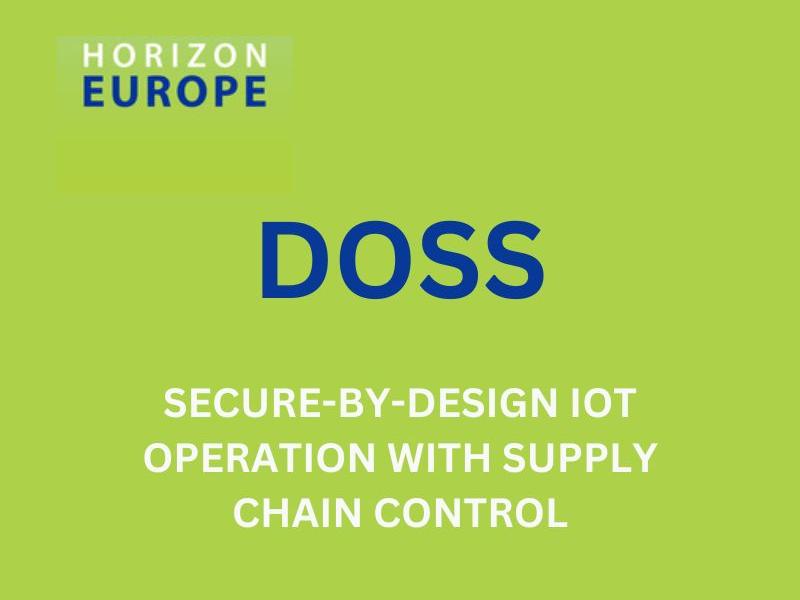
DOSS
SECURE-BY-DESIGN IOT OPERATION WITH SUPPLY CHAIN CONTROL
Julie Arteza
01 September 2023
31 August 2026
EC funded project
DOSS elaborates a secure-by-design methodology and implements related technology for complex IoT architectures, based on supply chain monitoring, component testing and architecture modelling.
The project establishes a “Supply Trust Chain” with integrating key stages of the IoT supply chain into a digital communication loop to facilitate security related information exchange. The technology includes security verification of all hardware and software components of the modelled architecture. A new “Device Security Passport” will be defined for 3rd party hardware and its components. 3rd party software, open-source applications, as well as in-house developments will be tested and assessed. The centrepiece of the proposed solution is a flexibly configurable Digital Cybersecurity Twin, able to simulate diverse IoT architectures. It will employ AI for modelling complex attack scenarios, discovering attack surfaces, and elaborating the necessary protective measures. The digital twin will provide input for a configurable, automated Architecture Security Validator module which will assess and provide pre-certification for the modelled IoT architecture in respect of relevant, selectable security standards and KPIs. To also ensure adequate coverage for the back end of the supply chain the operation of the architecture will also be protected by secure device onboarding, diverse security and monitoring technologies and a feedback loop to the digital twin and actors of the supply chain, sharing security relevant information.
The procedures and technology will be validated in three IoT domains: automotive, energy and smart home.
This new secure-by-design approach for complex IoT operations will be an early implementation of the concept and requirements of the proposed European Cyber Resilience Act and will provide an operational reference model. Based on our learnings and experiences we will make policy recommendations and will contribute to standardisation.
Resources for EU Research
Resources for SMEs
News & Events
Reports
Cyberwatching.eu has received funding from the European Union’s Horizon 2020 research and innovation programme under grant agreement No 740129. The content of this website does not represent the opinion of the European Commission, and the European Commission is not responsible for any use that might be made of such content. Privacy Policy | Disclaimer / Terms and Conditions of Use

